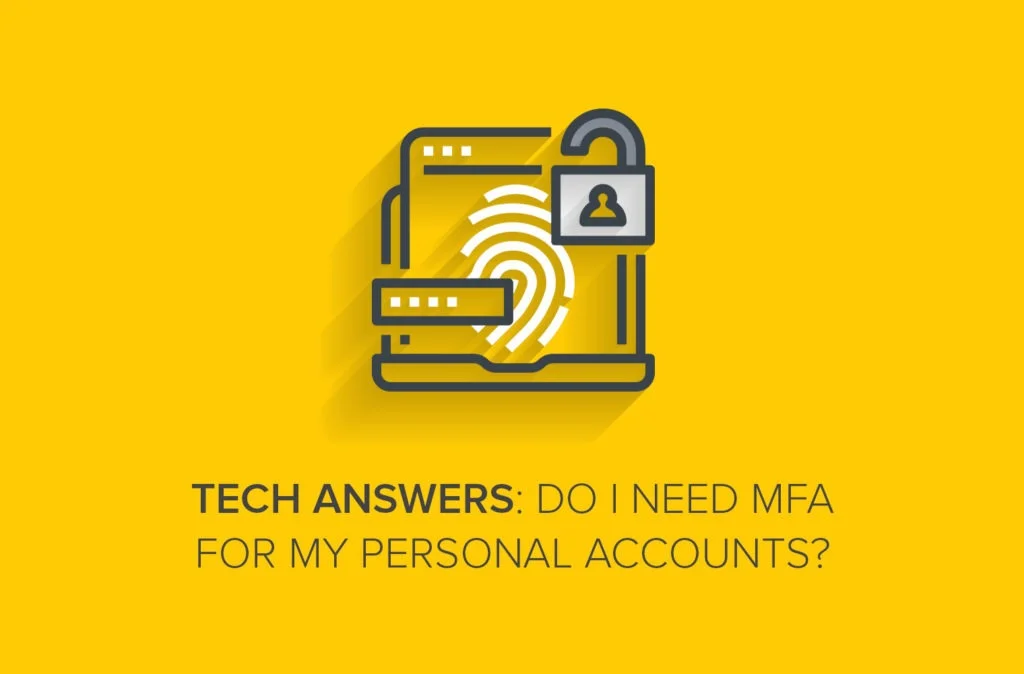
Better to be safe than sorry, folks!
We hate to be the one to break it to you, but what you’ve heard is true: passwords are no longer enough to protect your private information. Today’s cyber criminals are smarter than ever before – which makes stopping them just that much harder to do. And while you likely already use some form of Multi-Factor Authentication (MFA) through your employer, your professional accounts aren’t the only ones that require extra security.
So, to answer your question: yes! If you haven’t already enabled MFA on your personal accounts, this is your sign to do so, and fast. From social profiles to emails, any data left in the care of single password protection alone is at serious risk from hackers, ransomware, and other bad actors.
The good news? Getting started is easy.
Let’s dive in:
What is MFA?
Multi-Factor Authentication – also known as MFA – is pretty much exactly what it sounds like.
In short, MFA is a security measure that requires the user to apply two or more authentication measures in order to access an account or device. Depending on the software, these authentication measures can be something you know (like a pin or a password), something you have (such as a badge or token), or something you are (like voice recognition or fingerprints). MFA combines a number of these measures as a part of the login process in order to provide your account with a secondary layer of protection.
The most basic version of MFA is known as Two-Factor Authentication or 2FA, meaning that your account is only protected by two layers of authentication measures.
How Do I Use MFA?
The form of MFA that you’re most likely to use on your personal accounts supplements your garden variety password protection with a pin sent to a secondary device. Whether it be via text message or push notification, setting up this secondary device is often as easy as entering your phone number alongside your email address in your account settings and turning MFA or 2FA on.
Once enabled, your account will prompt you to log in with your username and password and, if correct, will send a code to your phone to guarantee that you are who you say you are.
What Apps Offer MFA?
Not every application offers Multi-Factor Authentication as part of its standard login practices. Here are a few of the most common companies that offer either 2FA or MFA:
Facebook/Instagram
Google/YouTube
LinkedIn
Twitter
Amazon
PayPal
Apple
DropBox
Microsoft
Yahoo If you’re unsure whether a specific application offers MFA, check your security settings.
